110 videos match your search.
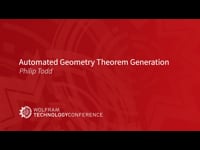 |
Philip Todd We present a method for automatically generating new geometry theorems using angle chasing techniques. Our method transforms rank-deficient matrices to incorporate line angles and bisectors, and outputs the theorems in ... |
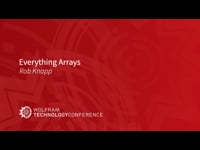 |
Rob Knapp Working with arrays is fundamental to efficient use of Wolfram Language and appears in almost any computation. The basic representation for an array is a nested list, but there are ... |
 |
Connor Gray |
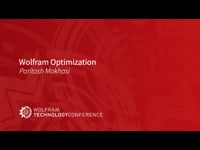 |
Paritosh Mokhasi
This talk will give an overview of the various optimization functions that can be used to solve a wide variety of convex, nonconvex and multidomain problems. The Wolfram optimization functionality will be demonstrated using a diverse set of examples. Visiting this talk ... |
 |
Stuart Nettleton, David Boyle
Uncertainty is a major component of subjective logic beliefs. We discuss the cloud of uncertainty across Markov networks, insights from computational irreducibility, and negative quantum quasiprobabilities and beliefs. |
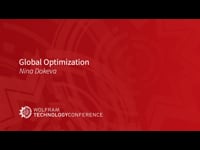 |
Nina Dokeva
This talk will discuss the global optimization functionality in Wolfram Language. It builds upon the convex and convertible to convex optimization functionality developed previously and extends to functionality for solving ... |
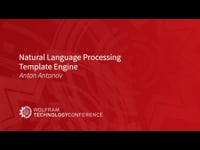 |
Anton Antonov In this presentation, we discuss the completion of computational templates with parameters that are extracted from text specifications using a question answering system. We outline the general method and demonstrate ... |
 |
Leonid Shifrin Dataset has become a widely used tool to process and manipulate data in the Wolfram Language, but its scope has been limited to the data stored in kernel's memory. In ... |
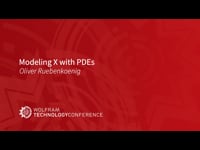 |
Oliver Ruebenkoenig In this talk, we will cover the usage of the NDSolve family of functions and the finite element method. The aim is to enable attendees to set up partial differential ... |
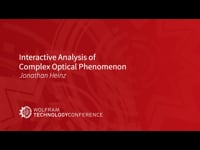 |
Jonathan Heinz Polaris-M was written in Mathematica as the first tool for analyzing interactions within optical systems by using real-world data and scientifically proven modeling. This presentation examines functions and displays written ... |
 |
Todd Gayley,Bob Sandheinrich,Bradley Ashby,Connor Gray ,Richard Hennigan , Brian Van Vertloo |
 |
Robert Nachbar The recent addition of PatternReaction and ApplyReaction to Wolfram Language allows the user to programmatically manipulate atoms and bonds in molecule objects in a chemically meaningful way. This talk shows ... |
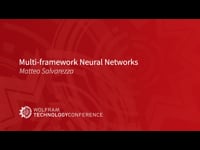 |
Matteo Salvarezza In this talk I will present NetExternalObject, a new symbol in Wolfram Language 13.2. It exposes new functionality to interface with external deep learning frameworks and run neural networks in their ... |
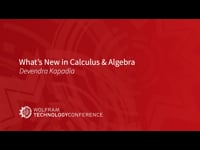 |
Devendra Kapadia This talk is an overview of upcoming features related to calculus and algebra in Wolfram Language, including dramatic speedups in polynomial algebra, new NFractionalD and NCaputoD functions, algorithmic advances for ... |
 |
Adam Strzebonski The upcoming release of Mathematica includes significant performance improvements in polynomial algebra functions and in linear algebra for matrices of univariate polynomials. The release also includes functionality extensions in polynomial ... |
 |
Timothee Verdier |
 |
Rodrigo Obando We introduce a unified model of cellular automata that represents rules by vectors of functions termed genes. We also discuss symmetric indices based on gene symmetry in each rule. We ... |
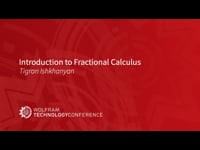 |
Tigran Ishkhanyan Fractional calculus develops the theory of differentiation of any real or complex order and studies the methods of solving differential equations involving these fractional-order derivatives. It is able to generalize ... |
 |
Maria Sargsyan ,Jofre Espigule-Pons |
 |
Mark Fisher, Nicholas Georgakopoulos We modify a 2002 IRT model applied to Supreme Court justicesí votes, adopting a nonconjugate prior for case parameters and allowing justices' locations on a simple left/right spectrum to vary ... |